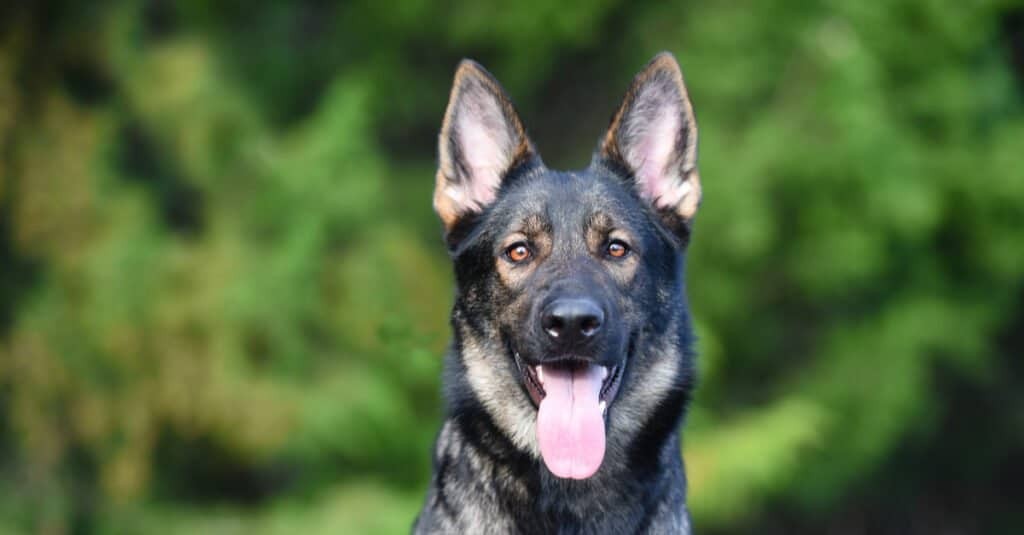
The German Shepherd Dog (GSD) exhibits remarkable coat color diversity, with sable and solid black being two distinctive variations that have garnered significant attention in both working and show environments. While the sable coloration, characterized by an agouti pattern with multiple colors per hair shaft, represents a dominant genetic trait often associated with heightened working drive and alertness, the solid black coat results from a recessive gene inheritance requiring both parents to carry the trait. Understanding these variations is crucial for breeders, trainers, and potential owners, as coat genetics can correlate with certain behavioral and temperamental characteristics that influence the dogs' suitability for various roles.
Sable and Black German Shepherd Comparison
Genetic Traits and Inheritance
While black German Shepherds inherit their solid color through recessive genes from both parents, sable coloring is actually a dominant genetic trait. The sable coat consists of individual hair shafts containing multiple colors (agouti pattern) with a lighter undercoat, creating a distinctive appearance. Only about 6.8% of German Shepherds are born black, making them relatively rare compared to sables which represent one of the most common colorations.
Working Capabilities and Temperament Distinctions
Sable German Shepherds tend to display more intense and alert personalities, with what some describe as "spidey senses" - making them particularly well-suited for military, police and Schutzhund work. While both varieties excel in working roles, sables are noted for being exceptionally quick learners with high situational awareness. Black German Shepherds maintain the standard breed traits but are often perceived as having a more composed demeanor while still being highly capable working dogs. Their solid black appearance can make them particularly imposing and effective in protective roles, though this is purely aesthetic rather than indicating any temperamental differences.
History and Origins of Sable and Black German Shepherds
Early Development and Recognition
While the previous section focused on genetic traits and working capabilities, this section explores the historical emergence of these coat colors. The sable coloration appeared early in the breed's development in late 1800s Germany under Captain Max von Stephanitz's breeding program. Initially, black German Shepherds faced some resistance from breeders who preferred other colorations. However, both varieties proved their worth during World War I, particularly in military and police roles, leading to greater acceptance.
Breed Standard Evolution
Black German Shepherds gained recognition despite their recessive genetic trait, while sable became established as one of the standard accepted colors. The breed standards evolved to acknowledge both colorations, though black remained relatively uncommon. Over time, selective breeding programs maintained these distinct color variations while preserving the breed's working capabilities and temperament. Today, both colors are fully recognized within breed standards, though black German Shepherds remain less common, comprising only about 6.8% of the breed population.
Physical Characteristics and Appearance
Coat Pattern Distinctions
The sable coat displays a unique agouti pattern with multiple colors per hair shaft, creating a dynamic appearance that can vary in intensity. This differs from the solid jet-black coat of black German Shepherds, which maintains a uniform color throughout. Both varieties feature the characteristic double coat of the breed, though their distinct colorations create notably different visual impressions.
Distinctive Features and Care Requirements
Grooming and Maintenance Differences
While black German Shepherds require regular grooming to maintain their sleek appearance, sable German Shepherds present unique grooming challenges due to their multi-colored hair shafts. The agouti pattern in sables means that brushing and coat maintenance must account for the varied coloring to properly distribute natural oils and maintain the characteristic pattern. During seasonal shedding, sables may appear to change color intensity as the undercoat is shed, while black GSDs maintain their solid appearance even during coat blowing seasons.
Training and Exercise Adaptations
Unlike previous sections focusing on general temperament, this section examines specific training approaches. Sable German Shepherds often display heightened environmental awareness and learning capacity, requiring more varied mental stimulation in training routines. Their "spidey senses" mean handlers must account for increased environmental reactivity during training sessions. While black GSDs excel in standard training protocols, their generally calmer demeanor allows for more straightforward training progression. Both varieties benefit from early socialization to prevent their protective instincts from becoming problematic, though sables may require additional focus on impulse control due to their naturally more intense personality traits.
Conclusion
The research reveals significant distinctions between sable and black German Shepherds, particularly in their genetic inheritance, temperament, and physical characteristics. While sable coloring is a dominant genetic trait and one of the most common colorations, black German Shepherds are relatively rare, making up only 6.8% of the breed population due to their recessive genes. Temperamentally, sable German Shepherds tend to display more intense and alert personalities with heightened environmental awareness, making them especially suited for military and police work. Black German Shepherds, while equally capable working dogs, are often noted for having a more composed demeanor.
The findings have important implications for potential owners and breeders. The distinct grooming needs and training requirements between the varieties should be considered - with sables requiring specialized attention due to their multi-colored coat pattern and more reactive temperament, while black GSDs maintain more straightforward care needs. Understanding these differences is crucial for matching the right dog to the right role or family situation, whether for working purposes or companionship. Both varieties maintain the breed's excellent working capabilities and protective instincts, though their different characteristics may make one more suitable than the other for specific applications.